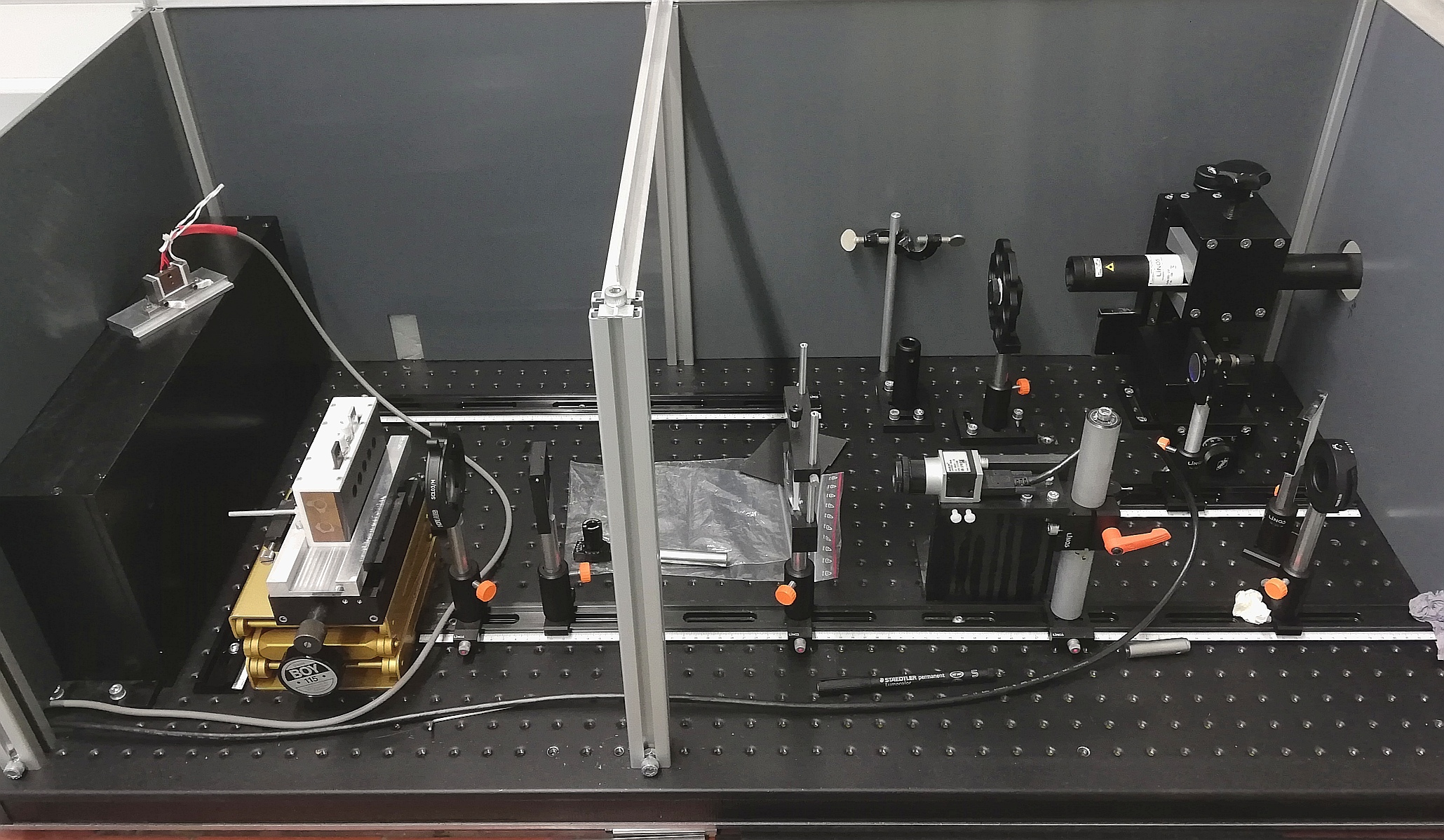Small Angle Light Scattering System
The Small Angle Light Scattering Device (SALS) is a home-built device, developed by N. Schmidt within his PhD-work. The set-up is explicitly outlined in (N. Schmidt, S. Keuker-Baumann, J. Meyer and K. Huber J. Polymer. Sci., Part B: Polym. Physics (2019) 57 (22), 1483-1495 DOI: 10.1002/polb.24892) and in (N. Schmidt, Dissertation, Paderborn 2020). A linearly polarized He-Ne laser (G040804000, Qioptiq Photonics GmbH & Co. KG, Göttingen, Germany, wavelength 632.8 nm, power 2 mW) is used as a light source.
Angular regime of the detector : 0,5° < Θ < 15°
Regime of scattering vector (depends on medium (n) ): 8,7.105 m < q < 26.105 m, at n=1
Time resolution: Recording of scattering patterns at a maximum rate of 1 Hz.
The instrument records 2-dimensional static scattering patterns with a CMOS detector unit having the size of 11,3 mm x 11,3 mm (CMV4000, ams Sensors, Germany GmbH, Nürnberg). The set-up makes possible the detection of horizontally polarised scattered light based on vertically polarized incident light (depolarized light scattering).
Measured parameters include 2-dimensional scattering patterns of growing polymer crystallites and their interpretation (depolarized light scattering). Mean squared radius of gyration (Rg2) and formfactors from colloidal particles in dilute solution (particle radius 1 mm < Rg < 30 mm) as z-averaged values.
Peripheral device: Temperature controlled sample stage for polymer melts covering a temperature regime of 25 °C < T < 250 °C.

